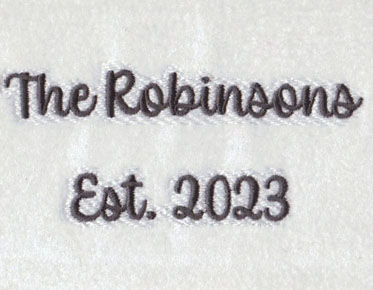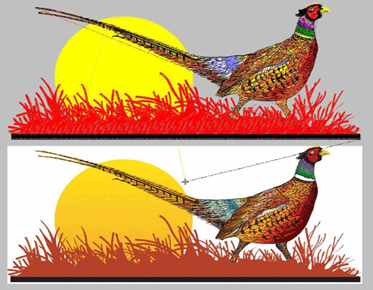Avoiding Common Defects with Knockdown Stitch in Digitizing Embroidery
Embroidery is a beautiful art form, but it requires precision and expertise to get the best results. One of the most important aspects of embroidery is the choice of stitch, and the knockdown stitch is one of the most popular options for achieving a smooth, polished finish on fabric. In this article, we will discuss how the use of knockdown stitch can differ on different types of fabric and how to avoid common defects that can occur when using this stitch in embroidery designs.
Using Knockdown Stitch on Different Fabrics:
When it comes to using knockdown stitch on different fabrics, it's essential to consider the type of fabric you will be embroidering on. For example, knockdown stitch on a dense fabric like denim or canvas may require a higher density of stitches to provide better coverage, while using knockdown stitch on a more delicate fabric like silk or chiffon may require less density to avoid puckering or distortion.
Additionally, it's important to consider the thickness of the fabric. Thicker fabrics may require multiple layers of knockdown stitches to ensure proper coverage, while thinner fabrics may require only one or two layers to achieve the same result.
Avoiding Common Pitfalls:
While knockdown stitch can be a valuable technique in embroiderydigitizing, there are also some common pitfalls to watch out for. One of the most common issues with knockdown stitch is puckering or distortion in the final design. This can occur when the density of the stitch is too high, or the stitch length is too long, causing the fabric to pull and distort.
To avoid these issues, it's essential to test your design on a sample piece of fabric before embroidering the final product. This allows you to adjust the stitch density and length to ensure the knockdown stitch is providing the right coverage without causing distortion or puckering.
Conclusion:
Using the knockdown stitch can
greatly enhance the quality and longevity of your embroidery designs, but it
requires skill and expertise to use correctly.
As with any embroidery technique, it's important to practice and
experiment to find the best solutions for your specific projects. If you need assistance with your embroidery
digitizing or vectorization
projects, Eagle Digitizing is always
here to help. With our experienced team
and state-of-the-art technology, we can bring your designs to life with
precision and quality.


